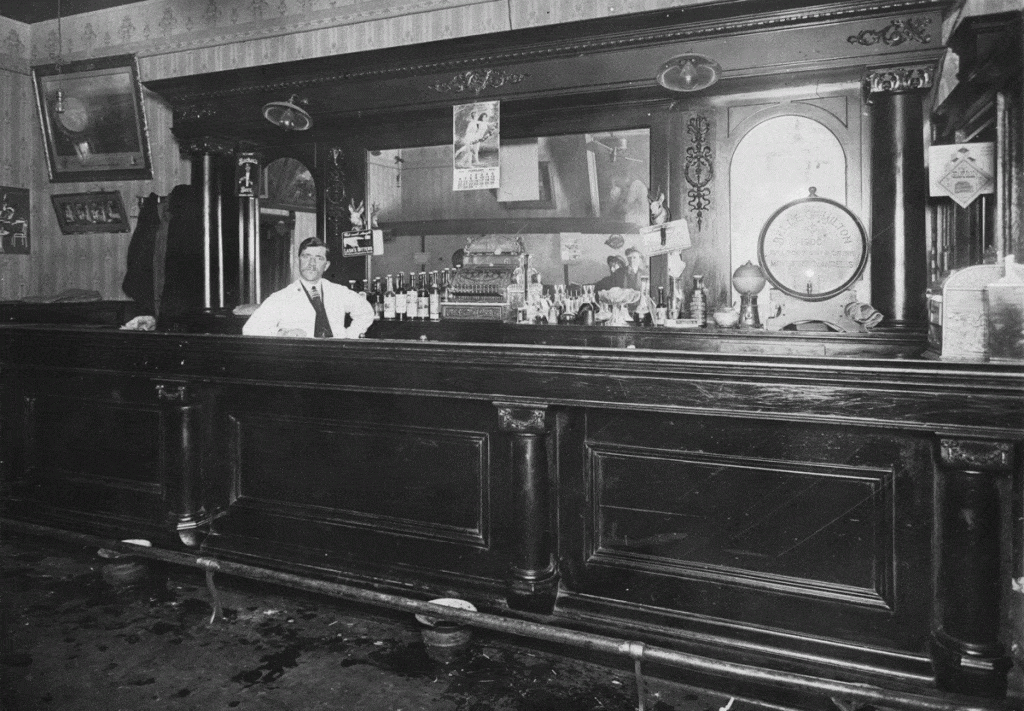
Credit: Park City Museum, Jack and Donna Scholl Collection
Quenching one’s thirst has never been a problem on Park City’s Main Street. From its earliest days as a mining camp, barkeepers were quick to capitalize on a community made up of mostly single men thirsting for companionship, a little gambling, and above all, a cold beer or a warm whiskey.
Enough prospectors and miners gathered by 1874 for saloons to open. By 1880, dozens were scattered up and down Main, enough for one writer to observe, “If a fellow wants to become intoxicated, he can start at one end of the street, take a drink at each saloon, and before he is halfway up or down…be gloriously intoxicated.”
Intoxication inevitably led to problems. In the early years, historian William McPhee wrote, “Main Street after dark was not considered a respectable place for a young lady to be alone.” Public intoxication was a serious enough crime that Judge John L. Street in the 1880s was fining drunks $30—a month’s wages — or giving them the option of serving 30 days in jail. Most paid the fine.
There were town rules for bartenders. For one, women were not allowed. Bars were not supposed to sell liquor to a man whose family needed money. They were also told not to serve alcohol to a man who had already consumed too much. They could not admit the “soiled doves” who worked out of brothels in town, although many working girls bought liquor out of saloon back doors to help “entertain” their gentleman callers. Inside, another vice flourished. Many saloons operated round-the-clock blackjack tables, and wagering on everything from local horse races to which miner could drill the fastest through a block of granite took place at the bar.
Mining towns were melting pots for immigrant populations who headed west, and saloons in Park City catered to different nationalities. The Finns drank at Finn Hall, while Swedes favored the Swedish Saloon. The Irish, Cornish, Slavs and others all had their “home” saloons, and fights could break out when one nationality crashed another’s bar.
Prohibition barely put a damper on Park City’s bar scene. Utah went dry in 1917, four years before the rest of the country. Bars held closing night parties, where drinks got cheaper as the clock got closer to midnight.
On Main Street, the many saloons converted into “soft drink parlors,” but didn’t stay alcohol free very long. Only one stuck to soft drinks while all others were soon discretely pouring locally produced moonshine as well as whiskey imported by Wyoming bootleggers. The colorful history of Park City’s saloon scene will be celebrated by the Park City Museum’s Pub Crawl on October 18 from 5:30 to 8:30 p.m. Participants will visit the No Name Saloon (formerly the Alamo), the Crystal Park Cantina (formerly Bistro 421 and Miletti’s before that), and The Cabin, in the New Deal-era War Memorial Building. At each, pub crawlers will learn the history of the saloons, their past owners, and patrons — and enjoy drinks and appetizers.